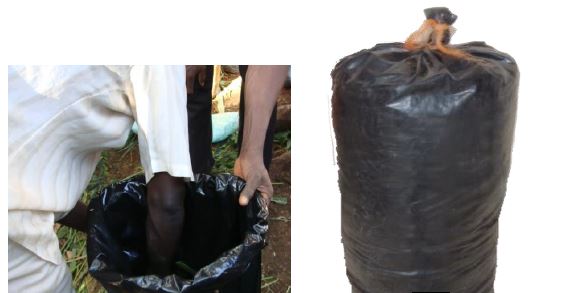
Organically grown young maize in a maize farm. Organic farming has lower heath risk to the farmer and is better for the environment.
One of the most commonly recognized market niches is the growing demand for organically grown foods. This has been championed by most agricultural organizations including Nuru International which William Wang’era worked for as a field officer for five years at its Isebania, Kuria West branch.
When Wang’era was forced into early retirement by the organization due to a disease which incapacitated him, he opted into organic maize farming upon getting well using valuable manure from cattle, sheep, goats and chickens he collects from his own flocks and buys some from his colleagues.
According to him, the skill and experience he got during his tenure is the most important retirement package he garnered from the firm. The money he received as a retirement sendoff was consumed by hospital bills.
“I was left with no job but happy that I was well again and in the right state of mind so I delved into organic maize farming with no mentionable capital except my skill and experience,” said Wang’era.
READ ALSO: Low nitrogen and drought tolerant maize gives over 20 bags per acre
READ ALSO: Market for organic produce
READ ALSO: Organic farming provides alternatives to failed farm techniques
By the time he started growing maize, his two acres farm under maize had not been cultivated for about one and a half years giving him the reason for preferring that piece of land out of his six acres land.
Wang’era ensures that each morning he collects all the cow dung from his cow shed and droppings from the sheep, goats and chickens. These together with swept and collected avocado leaves among other farm trash are dumped into compost pit for decay into manure and further use.
In addition Wang’era avoids burning or removing maize stovers and other crop residues from the field. The practice of burning crop residues is not allowed in organic farming. Organic farmers leave crop residues on the land as mulch to decompose and return their constituent nutrients.
“I always keep the farm remains in the farm because they turn into manure with time for the plants use,” said Wang’era.
Every season he harvests 26 sacks of maize and in a bid to minimize post-harvest losses he buys hermetic maize sacks which he uses to store them.
During maize shortage, he sells a sack of 90kg between 3, 000-4, 000 shillings to maize stores at Isebania Town. For the villagers who come for small quantities like two kilograms, he sell at Sh150 each.
Today, an increasing number of consumers are paying more attention to eating healthy and thus are consuming more organically grown produce, according to Chesapeake Fields Institute survey.
Write comment (0 Comments)

















